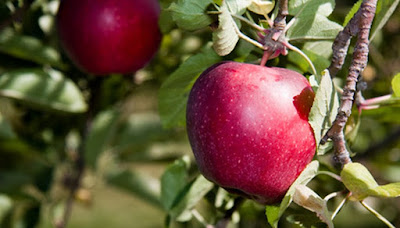How To Treat Apple Trees
How To Treat Apple Trees
If you are a caring gardener, it means that you inspect your plantings regularly and every season. Then in time you can notice on apple trees such a disease as a fungus-tinder fungus, which usually grows in the hollows of trees. Some amateur gardeners believe that such a growth protects the apple tree, preventing the hollow from expanding, but this is absolutely wrong. The mushroom grows, causing the destruction of wood and sucking juices from the core. While there is only one such growth, the tree can still be saved. |
| How To Treat Apple Trees |
- knife, ax, hacksaw or chainsaw;
- solution of copper sulfate;
- garden var;
- Mullein and clay;
- nigrol, rosin, ash and wax;
- stiff brush;
Instruction manual:
- Remove the mushroom. If it is already woody, take a large knife, a hacksaw, an hatchet, or even a chainsaw . Healthy wood will also have to be destroyed, but the tinder funnel must be removed completely, to a clean place.
- Scrape the wound with a knife or scraper to healthy wood so that a relatively smooth and even surface is obtained.
- Disinfect the wound. To do this, take a 5% solution of copper sulfate or creosote and process the hollow. Then coat this place thoroughly. You can make it oil paint or garden var. Or you can take nigrol, rosin, ash and wax in a ratio of 10: 6: 3: 1, mix and cover the wound.
- There is another (old) option for treating wounds. Knead a putty made of fresh mullein and clay, taking the components in equal parts. Mix everything well. For 5 liters of such a mixture (half a bucket), add 0.5 liters of the prepared solution of copper sulfate (3 percent). Coat the damaged area with the prepared mixture.
- You can treat with a tool that was prepared for putty wounds, all nearby areas of the apple tree - the trunk and branches (only first dilute it with water, excessive density will no longer be needed). The fact is that you may not immediately notice the spread of fungus fungus throughout the tree, and such preventive measures will prevent its germination.
- However, simply applying the product to the bark is not enough. You must first prepare the surface. To do this, take a stiff brush (if the tree is old, and the bark on it is thick, you can use a metal brush or even a piece of netting) and clean the old bark from the trunk and branches (without fanaticism, only the top layer, as if dead,). After that you can continue processing.
- Do not forget, upon completion of all work, to rake the old bark and fragments of the fungus mushroom rake from under the apple tree and burn it at the stake. This must be done in order to destroy cocoons and eggs of various pests, as well as hyphae (cells) of the fungus.
Note:
There are several varieties of fungi-tinder fungi. Depending on the type, they can be white, brown or brown, as well as striped, stains, hard, fluffy, dry, mucous, etc. The measures for dealing with all are the same.
Useful advice:
Experienced gardeners say that if the fungus-tinder fungus was large, then it will be possible to get rid of it only for a while. The fact is that tinder fungal hyphae have the ability to penetrate deeply into wood, which makes it practically impossible to save the apple tree. It will gradually fade away, first reducing productivity, then becoming clumsy, covered with growths and hollows. Therefore, even if the operation to remove the fungus was successful, it is worth considering replacing the tree.
In the future, take care of the preservation of fruit trees - protect them from mechanical damage, clean off rotten bark, and close up hollows and cracks.






A tree specialist requires having a specialist information about trees and the course of how these trees develop, the sorts of sicknesses they go through, and how they ought to be formed and cut appropriately. tree surgeon dunstable